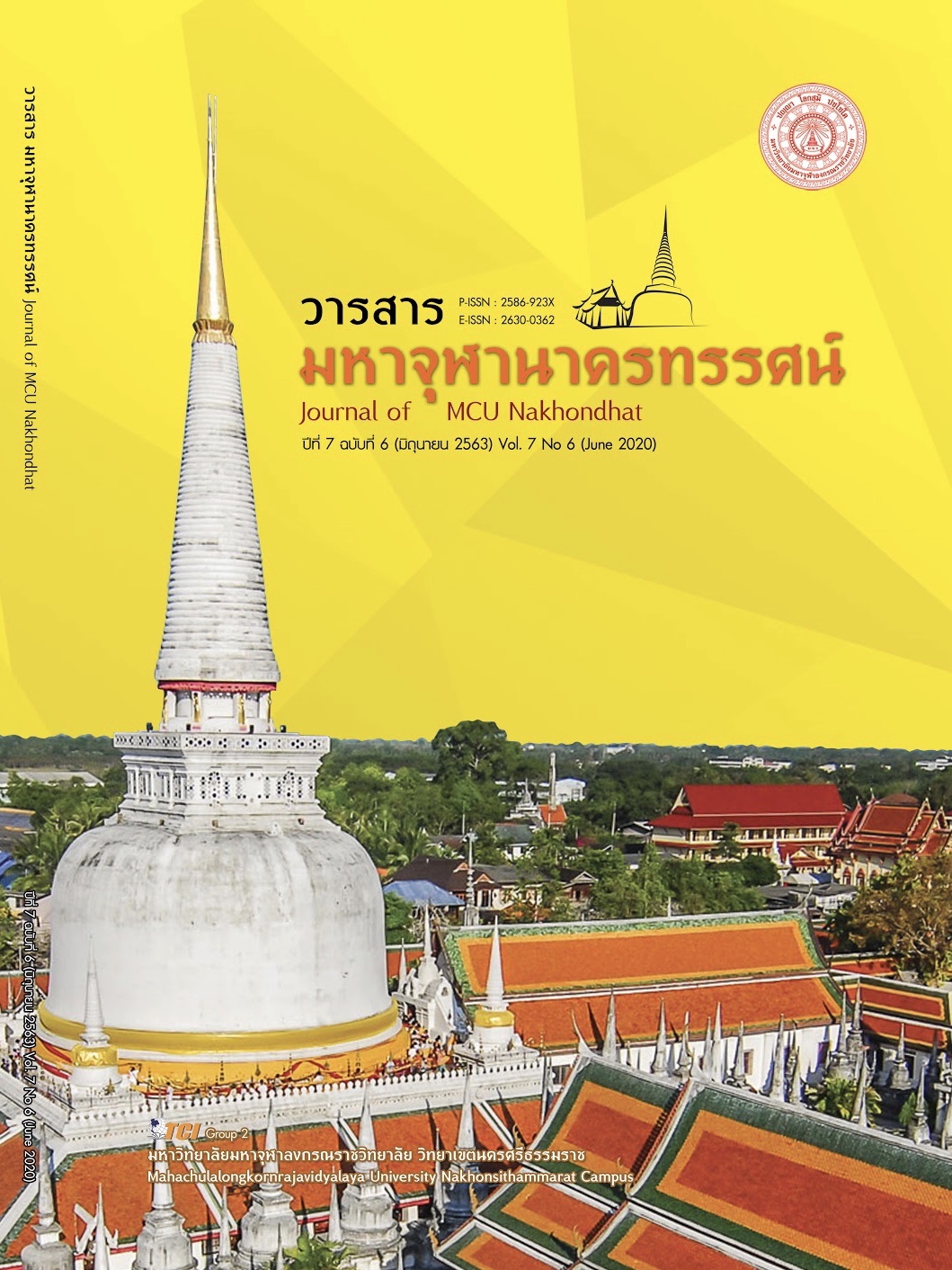ESSENTIALS APPEARED AT THE ORDINATION CEREMONY IN BUDDHISM
Main Article Content
Abstract
This academic article was to aim at doubtfully answering how to the ordination which is the ceremony will be the authentic benefits. It was to search for the essentials from the ordination ceremony. The ordination is to give the faithful persons in Buddhism to entry into developing one’s own life quality based on the change from the laity status becoming into the monkhood that resulted to their transformation of duties in regard to conduct in the five qualities which should be established in newly ordained monks consisting of 1) restraint in accordance with the monastic code of discipline and the fundamental training – rules, 2) restraint of the senses, 3) restraint as regards talking, 4) seclusion as to the body, and 5) cultivation of right views. These are to incubate their habits to be discreetly, bleak, to think critically for decision, to understand the essentials in the 6 doctrines of appreciative action consisting of 1) reverence for the Master, 2) reverence for the Dhamma, 3) reverence for the Order, 4) reverence for the Training, 5) reverence for the earnestness, and 6) reverence for the hospitality. The essential of ordination is a path of one who is grateful and repays the done favour like parents and others, also is to be refined the new monk becoming one who is right views to establish morally one’s own way of life with training physically, verbally and mentally to be strong, stable, happy and to realize things as they really are based upon the principle of Threefold Training or Tri – sikkha consisting of Sila morality, Samadhi concentration and Panya wisdom. All of them are to cultivate the leadership leading to develop the personal, family, social and national levels.
Article Details
References
พระธรรมโกศาจารย์ (ปัญญานันทภิกขุ). (2543). คำสอนในพระพุทธศาสนา. นนทบุรี: กองทุนปัญญานันทธรรม.
. (2555). เมื่อเราบวช. ชลบุรี: ประยูรวงศ์พริ้นติ้ง จำกัด.
พระพรหมคุณาภรณ์ (ป.อ.ปยุตฺโต). (2551). พจนานุกรมพุทธศาสน์ ฉบับประมวลศัพท์. (พิมพ์ครั้งที่ 11). กรุงเทพมหานคร: สำนักพิมพ์จันทร์เพ็ญ.
. (2556). สอนนาค - สอนฑิต. (พิมพ์ครั้งที่ 25). กรุงเทพมหานคร: สำนักพิมพ์ผลิธัมม์.
พุทธทาสภิกขุ. (2543). บวชทำไม. (พิมพ์ครั้งที่ 2). กรุงเทพมหานคร: สุขภาพใจ.
. (2546). มนุสสธรรม. ไชยา: ธรรมทานมูลนิธิ.
มหาจุฬาลงกรณราชวิทยาลัย. (2500). มหาจุฬาเตปิฏกํ. วินย.1. พระนคร: มหาจุฬาลงกรณราชวิทยาลัย.
. (2500). มหาจุฬาเตปิฏกํ. วินย.4. พระนคร: โรงพิมพ์มหาจุฬาลงกรณราชวิทยาลัย.
. (2500). มหาจุฬาเตปิฏกํ. สุตฺตนฺต. 21. พระนคร: มหาจุฬาลงกรณราชวิทยาลัย.
. (2500). มหาจุฬาเตปิฏกํ. สุตฺตนฺต. 22. พระนคร: มหาจุฬาลงกรณราชวิทยาลัย.
. (2500). มหาจุฬาเตปิฏกํ. สุตฺตนฺต. 23. พระนคร: มหาจุฬาลงกรณราชวิทยาลัย.


